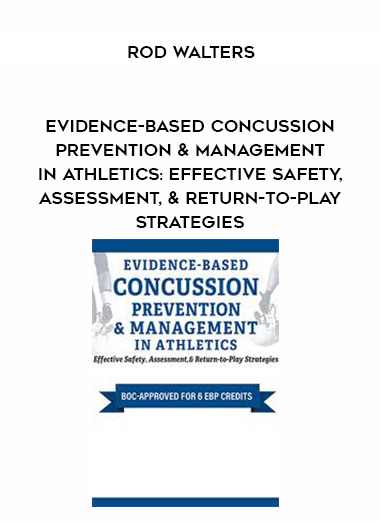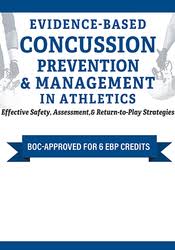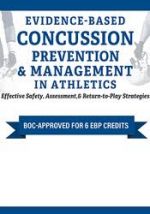
Concussion Lawsuits? Student Athletes Unionizing?
Head off Trouble with Sound Safety Measures
The importance of protecting athletes from lasting concussion damage has been underscored by recent litigation and statutes introduced in all 50 states addressing concussions and return to play. But concussion management continues to challenge athletic programs and sports medicine teams regardless of the level of sport, with nearly 4 million concussions reported each year. This course is your comprehensive guide to concussion prevention, assessment, and management, as well as baseline testing and emergency action planning. In addition, the final section covers supervision and administration of athletic training services based on recent best practices.
In this recording, you’ll learn how to reduce concussion risk and make return-to-play decisions with clinical certainty — led by collegiate athletic training veteran and NATA Hall of Famer, Rod Walters.
- Discuss the components of an emergency action plan
- Summarize and apply the concepts of procedures vs. policy relative to administration of athletic healthcare
- Compare the challenges and differences in providing healthcare vs. coverage
- Analyze components of medical care for sport populations
- Assess common signs and symptoms of concussion based on the current research
- Analyze results of concussion tests for specific populations (neuropsychological, vision, balance, graded symptoms checklist) with an objective basis of assessment
- Review definitions & the history of concussions
- Application of parameters for concussion assessment
- Concussion assessment, including baseline testing, post-injury assessment, & return-to-play decisions
- Overview of tools for concussion assessment
- State Laws
- Lab – Objective Assessment Practice
- Independent Medical Care
- Supervision of athletic trainers
- Involving team physicians in formal institutional roles
- Contact Sport Guidelines
- Best Practices
- Emergency Action Plan


































Reviews
There are no reviews yet.